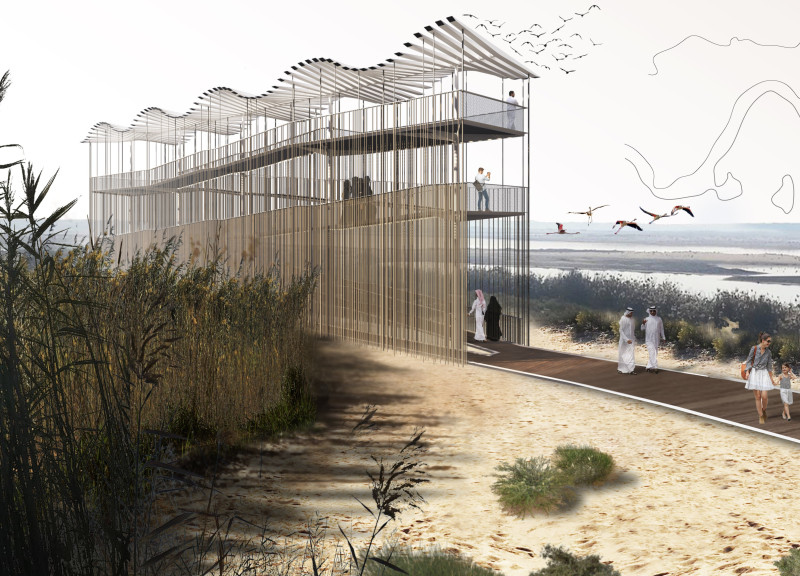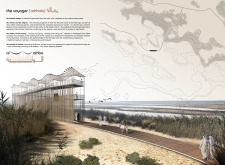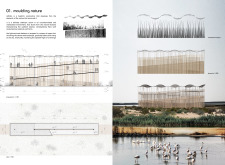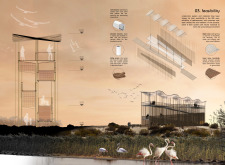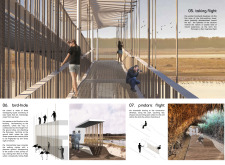5 key facts about this project
رحالة (Rahhala) is located in the Al Wathba Wetland Reserve in Abu Dhabi, UAE. The project embraces the themes of migration and nomadism while highlighting the unique relationship between people and their environment. By incorporating elements of the local ecosystem and the migratory behaviors of birds, particularly flamingos, Rahhala offers visitors a space to connect with nature. It reflects the cultural heritage of the area and emphasizes the importance of ecological conservation.
Design Concept
At the heart of Rahhala is the idea of movement and change. The design echoes the migratory paths of the Bedouin tribes who traveled between the coast and inland areas. It encourages visitors to engage with their surroundings in a way that is both meaningful and reflective. The journey through the space serves as an opportunity to contemplate the natural world, making the architectural experience deeply intertwined with the environment.
Visual and Structural Elements
The structure features a lightweight framework that blends with the surrounding landscape. A screen made of ropes wraps around the building, mimicking the dense reeds found in the wetland. This design choice creates a connection between the architecture and the natural elements, reinforcing the relationship between the two. The building rises upwards, resembling the flight of flamingos, and provides an engaging view for visitors as they navigate through the space.
Material Selection
Materials in Rahhala are chosen for their practicality and sustainability. Steel forms the main structure, ensuring durability for years to come. Additionally, natural recycled wood is used for the lower ramp. This selection not only supports the project’s environmental goals but also minimizes negative impacts on the local ecosystem. Careful consideration of materials reflects a commitment to ecological integrity and responsible design practices.
Visitor Experience
The architectural layout allows visitors to follow a path that encourages exploration and discovery. Along the way, designated resting spots invite moments of contemplation and connection with the environment. The rope layers serve as both an artistic screen and a way to observe wildlife without causing disturbance. This thoughtful design enhances the visitor experience by offering a chance to appreciate the area’s natural beauty and its inhabitants.
The experience culminates in a space that reflects the essence of migration. As visitors navigate through Rahhala, they are invited to engage with nature in a way that is both intimate and expansive, capturing the spirit of the flamingo in flight.


